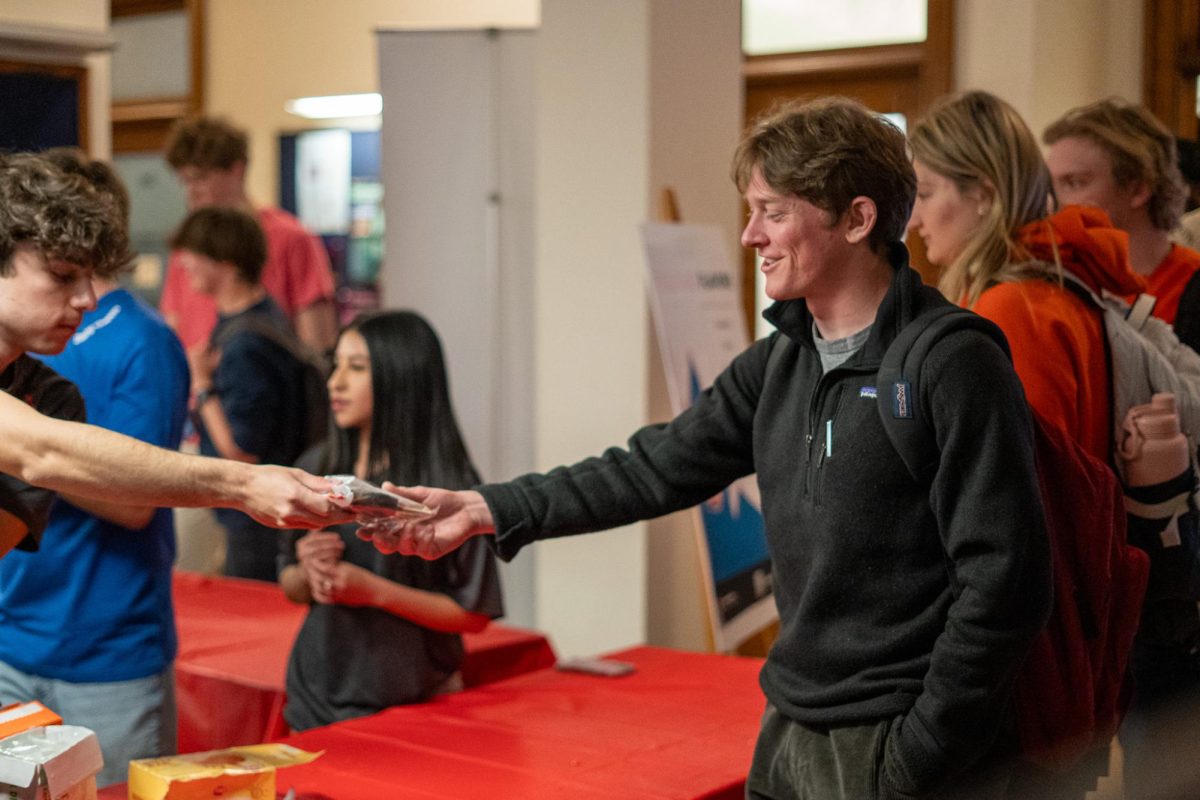As the threat of global warming looms, the Department of Energy and the Environmental Protection Agency have supported research on how to control the amount of carbon dioxide in the air.
The University was awarded $897,225 in a grant from the EPA to conduct further research on carbon sequestration. Carbon sequestration is a technique used to store away carbon dioxide and other kinds of carbon to lessen the effects of global warming.
“We’re giving money to places like U of I so that they can evaluate effects of sequestering large volumes of Co2 into the ground,” said Jeffrey McDonald, geologist with the EPA.
With Congress seeking to create an environment bill in the near future, there could be consequences for companies that are emitting large amounts of Co2. McDonald said Congress will likely put a cap on the amount of Co2 companies and other large producers of Co2 can emit. With these future restrictions, companies will seek to do away with all the extra Co2 they are producing.
Carbon sequestration provides an avenue for this by allowing Co2 to be injected into reservoirs in the ground.
Get The Daily Illini in your inbox!
“If companies are going to want to inject Co2 into the ground, we want to make sure there’s enough research and a regulatory framework in place so that can be done safely,” McDonald said.
The money that was given to the University will be used by the Illinois State Geologic Survey (ISGS) and the Midwest Geological Carbon Sequestration Consortium together to further their research on carbon sequestration techniques, said Sallie Greenburg, assistant director of the advanced energy technology initiative at the ISGS.
There are three types of carbon sequestration, Greenburg said.
One type is sequestration in coals, which means injecting Co2 into a coal bed. Another type is also enhanced oil recovery, which uses Co2 to recover oil from a reservoir, making the oil less sticky. This is a well established process, and also a way to treat Co2 as a commodity, Greenburg added. The third type is storage of Co2 in a deep saline reservoir.
The ISGS is in the midst of conducting research on carbon sequestration. Just west of Champaign in Decatur a well was drilled in the Illinois basin. One million metric tons of Co2 will be injected into the well over a three-year period. The source of the carbon dioxide is Archer Daniels Midland, a company that produces oils and sweeteners among other things.
Funding from the EPA is possible because this other big project in Decatur exists, Greenburg said. This grant will allow the ISGS to continue with their research, she added.
Matt Rundquist, member of Students for Environmental Concerns and sophomore in ACES, said he thinks it is good that research is being done on carbon sequestration, but believes we should be investing more time in learning about renewable forms of energy.
“There’s no reason to spend money on carbon sequestration if we can save money up front on energy efficiency,” Rundquist said.
We should focus on reducing our carbon emissions up front, meaning reducing the amount of Co2 we’re emitting all together and making more efficient lifestyle choices, he added.
As far as carbon sequestration is concerned, Rundquist said. “We don’t have to inject it directly into the ground, there are other ways to sequester carbon.”








